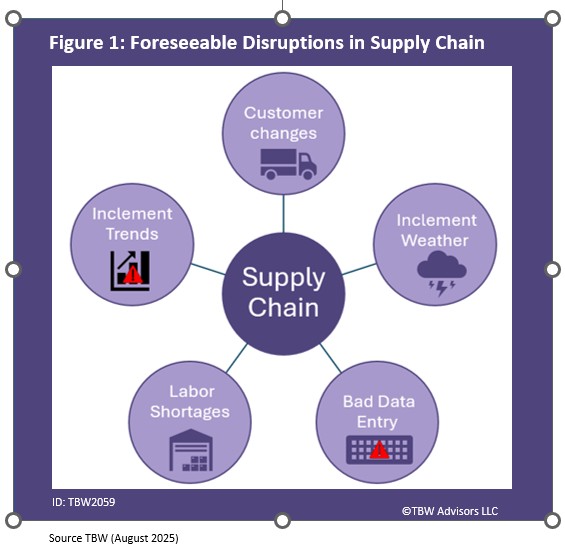Published to clients: August 27, 2025 ID: TBW2059
Published to Readers: August 28, 2025
Published to Email Whispers: TBD
Published Public with Video Edition: TBD
Analyst(s): Dr. Doreen Galli
Photojournalist(s): Dr. Doreen Galli
Abstract:
“This report dives into the evolving role of generative AI in logistics, revealing how it’s reshaping visibility, communication, and adaptability across global supply chains. From forecasting weather impacts to managing labor shortages and customer-driven changes, the research explores both the promise and the limitations of AI. It also introduces a provocative challenge: should supply chains adopt disruption modeling, just as IT uses threat modeling?”
Analysis available only to clients at this time. Join the YouTube Whisper Club at the Whisper Club Level to get access to the video edition today.
Related playlists
- Whisper Report: How can we manage tariff costs in our supply chain?
- Conference Whispers: Manifest 2024
- Whisper Report: What are the biggest challenges of using generative AI in logistics?
Corporate Headquarters
2884 Grand Helios Way
Henderson, NV 89052
©2019-2025 TBW Advisors LLC. All rights reserved. TBW, Technical Business Whispers, Fact-based research and Advisory, Conference Whispers, Industry Whispers, Email Whispers, The Answer is always in the Whispers, Whisper Reports, Whisper Studies, Whisper Ranking , The Answer is always in the Whispers, and One Change a Month, are trademarks or registered trademarks of TBW Advisors LLC. This publication may not be reproduced or distributed in any form without TBW’s prior written permission. It consists of the opinions of TBW’s research organization which should not be construed as statements of fact. While the information contained in this publication has been obtained from sources believed to be reliable, TBW disclaims all warranties as to the accuracy, completeness or adequacy of such information. TBW does not provide legal or investment advice and its research should not be construed or used as such. Your access and use of this publication are governed by the TBW Usage Policy. TBW research is produced independently by its research organization without influence or input from a third party. For further information, see Fact-based research publications on our website for more details.
